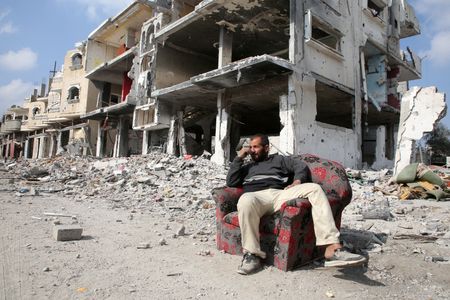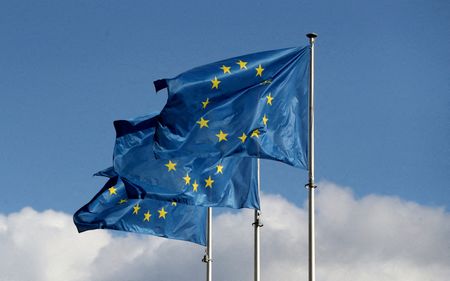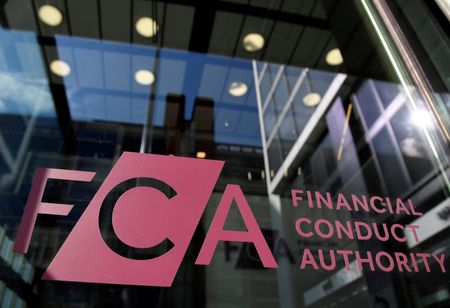By Johan Ahlander and Anna Ringstrom
OREBRO, Sweden (Reuters) -Students and teachers recalled trying to save the lives of their comrades before fleeing the scene of a mass shooting in Sweden described by the prime minister on Wednesday as a “dark day” in the country’s history.
Swedish police said there was no evidence the suspect, described by media as a 35-year-old unemployed recluse, had “ideological motives”, adding that the attacker appeared to have acted alone and shot himself dead at the scene.
At least 11 people died and many people were wounded in the attack at the Risbergska adult education centre in Orebro, central Sweden, on Tuesday.
Five of the six victims who were treated in hospital – four women and two men – had required surgery for gunshot wounds and remained in serious condition, regional authorities said.
Some students were in class while others were having lunch when the gunman began firing.
“A guy next to me was shot in the shoulder. He was bleeding a lot. When I looked behind me I saw three people on the floor bleeding. Everyone was shocked. They said: ‘Go out! Get out!’,” a school student, Marwa, told broadcaster TV4.
“I took my friend’s shawl and tied it tightly around his shoulder so that he wouldn’t bleed so much.”
Maria Pegado, 54, a teacher at the school, said someone threw open the door to her classroom just after the lunch break and shouted to everyone to get out. She and her students then started running out of the school to safety.
“I think of my students,” Pegado, who teaches adult students the skills to become kitchen staff, told Reuters. “Many of them have fled from countries where things like this happen and now they experience it here. It is horrible.”
Many students in Sweden’s adult school system are immigrants seeking qualifications to help them find jobs in the Nordic country, while also learning Swedish.
Ali El Mokdad arrived at the hospital overnight to see if his brother-in-law, who had gone missing, was among the injured. A friend of his had been at the school when the shooting broke out, he said.
“My cousin called her and she started crying. She fell to the ground because she was crying so much, she thought what she saw was so terrible. She only saw people lying on the floor, injured, and blood everywhere,” Mokdad told Reuters.
CALL FOR UNITY
Flags were flying at half-mast in Orebro as well as at parliament and the royal palace in Stockholm.
King Carl XVI Gustaf and Queen Silvia visited the school and will attend a memorial service later on Wednesday.
“A grieving process is hard to do alone,” the king told reporters after laying white flowers at a memorial site with candles near the school. “I think all of Sweden feels it has experienced this traumatic event.”
The royal couple were joined by Prime Minister Ulf Kristersson in the trip to Orebro, a city of more than 100,000 people some 200 km (125 miles) west of Stockholm.
“Feb. 4 will forever mark a dark day in Swedish history,” Kristersson said in a statement. “We are a country in mourning and we must all come together.
“Together, we must help the injured and their relatives bear the grief and weight of this day.”
Candles and flowers have been placed near the single-storey school in Haga Street, where police officers continued their investigations. Police officers stood nearby under a grey sky.
“There is no information pointing to the culprit acting on ideological motives,” police said on their website.
Local police chief Roberto Eid Forest said investigators still believed there was only one perpetrator. “We will get back on what motives there are,” he told a press conference.
Police said the suspect, whom they have not named, was not known to them before the attack. Swedish media said he was an unemployed man, aged around 35, who had a hunting license, details which have not been confirmed by police.
Unverified and contradictory rumours said the suspect may have been a neo-Nazi or a jihadist, among a range of other theories. Police stressed that none of it was based on evidence.
SHOCK, FEAR
The morning after the attack, Orebro was still in shock over the worst mass murder in Swedish history.
“That it could happen in Orebro, that was totally unexpected,” Mayor John Johansson told broadcaster SVT. “I understand that children, our youth, are very afraid today. So am I.”
Police said they did not see any general threat against schools or pre-schools in the country, nor against adult education schools, including Swedish classes for immigrants.
Sweden has been struggling with a wave of shootings and bombings caused by an endemic gang crime problem that has seen the country of 10 million people record by far the highest per capita rate of gun violence in the European Union in recent years.
However, fatal attacks at schools are rare.
Ten people were killed in seven incidents of deadly violence at schools between 2010 and 2022, according to the Swedish National Council for Crime Prevention.
(Reporting by Johan Ahlander in Orebro, Anna Ringstrom, Marie Mannes and Simon Johnson in Stockholm, Louise Rasmussen in Copenhagen; writing by Niklas Pollard and Gwladys Fouche; editing by Kim Coghill, Saad Sayeed, Philippa Fletcher and Mark Heinrich)







